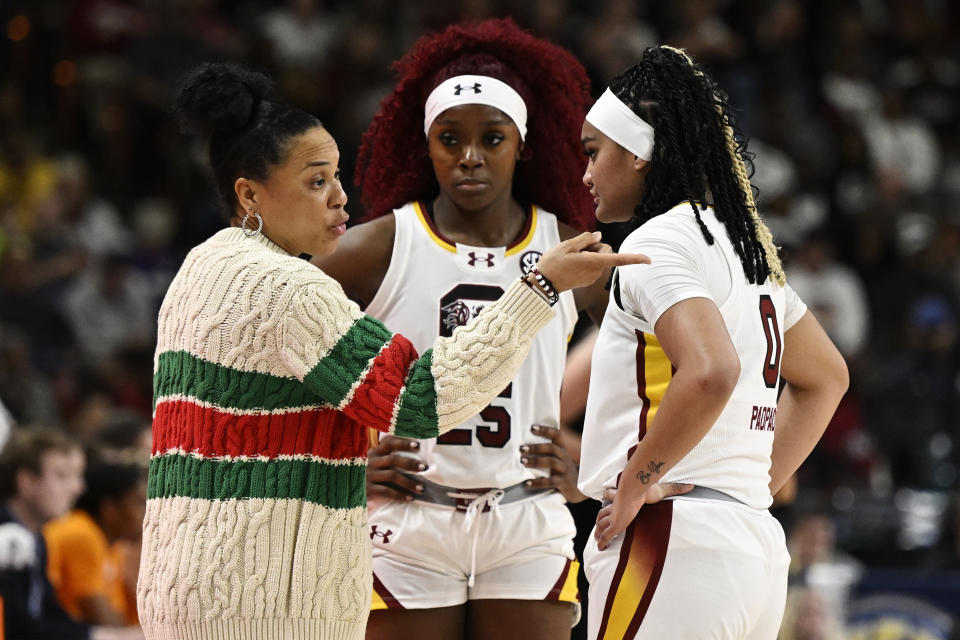
Can you imagine a world without college football walk-ons?
Well, it’s at least under consideration.
As part of a proposed new athlete compensation model, power conference leaders are considering significantly reducing football rosters, potentially moving from a roster of more than 115 to as few as 85-95 players. That figure (85) aligns with the maximum scholarship number permitted under NCAA rules.
The concept, circulated across administrative meetings over the last week, is part of what could be a sweeping and historic transformation of the industry in the coming few months — all of it rooted in a settlement agreement of various antitrust lawsuits. Any settlement of these cases — House, Hubbard and Carter — is expected to feature as much as $2.9 billion in back damages for former players, a future revenue sharing model with current athletes and an overhaul of the NCAA scholarship and roster structure.
Negotiations over a settlement are deep enough that NCAA and college executives are socializing plans of a new compensation model, including a permissive revenue-sharing concept that could see schools distribute to athletes more than $20 million annually starting as soon as 2025.
An overshadowed but impactful piece of the proposed new model is the addition of roster limits by sport and the expansion of scholarships. While the model features new roster limitations, it removes scholarship restrictions by permitting schools to expand financial aid to the entirety of a sport’s roster positions.
For example, under current rules, the NCAA permits schools to distribute 11.7 scholarships across a baseball roster of 32 players. Under a potential new model, a school could, if it chooses, distribute full scholarships across all 32 spots.
However, the new roster limit for baseball and other sports has not been defined. Those briefed on the matter caution that the idea is only under consideration. Conversations are steadily evolving.
While there continues to be heated debate over the football roster figure, a plan socialized with administrators, as well as coaching staffs, entails a reduction in the 120-person football roster by as many as 35 spots. The concept would eliminate all walk-on positions at most power schools, though programs are not required to provide scholarships to the NCAA maximum of 85 players.
The move is rooted in legalities. Permitting scholarship expansion is a way to avoid future antitrust lawsuits related to athlete restrictions. It also affords schools more freedom to strike a balance with the federal Title IX law requiring equal benefits to women and men athletes. Setting football roster limits is also an effort to both (1) reduce expenses amid the rising costs of athlete revenue sharing and (2) instill a cost-containment concept to limit a school’s scholarship distribution.
News of a potential 85-man football roster was met with backlash over the last week as league commissioners shared the news with athletic directors and coaches. In an odd twist, the NCAA recently increased the football roster limit for preseason camp from 110 players to 120. Most programs normally keep 100-120 players on a team. NCAA rules prohibit more than 70 different players participating in a single game.
Lowering the roster figure actually puts FBS more in line with other divisions and even professional sports. In FCS, 63 players can be on a partial scholarship on a roster size of 85. In the NFL, franchises hold 53 players on an active roster with another 16 on the practice squad. An offseason roster is much larger.
While football’s scholarship figure may remain the same as its roster size shrinks, other sports are anticipating an increase. Schools aren’t required to expand upon scholarships, but the belief in a hotly competitive recruiting market is that they will if afforded the opportunity.
For instance, the SEC has for years encouraged NCAA leaders to expand the 11.7 scholarship limit on baseball. A removal of such a restriction could see baseball rosters swell with more financial aid. In turn, women’s sports are likely to see their scholarships rise as administrators work to satisfy Title IX.
Three Power Four athletic administrators — each from the Big 12, ACC and SEC — tell Yahoo Sports that they have budgeted $8-10 million annually in additional scholarship expenses. Already, schools spend more on scholarships than any other expense aside from salaries and facilities. At an average of $15.4 million spent at the power league level in scholarship expense, the figure represents about one-eighth of an athletic department budget, according to figures compiled by the Knight Commission.
In positive news for administrators, a portion of the additional scholarship expense — perhaps as much as $3 million — may be counted toward the revenue-sharing cap. “However,” said one athletic administrator, “do you want your cap high or do you want it lower?” That answer is likely determined based on a school’s resource level.
Also somewhat unanswered is the future of equivalency scholarships.
The NCAA differentiates its sports as “head-count” versus “equivalency.” Athletes in head-count sports, such as basketball, football and women’s gymnastics receive only full scholarships (or, for walk-ons, none at all). Those in equivalency sports, such as baseball, track and swimming, can receive partial scholarships.
The NCAA does not cap rosters in most sports like it does scholarships, excluding baseball. Rosters are normally set by institutions themselves. There are only six head-count sports: women’s basketball (13 scholarships), gymnastics (12), volleyball (12) and tennis (8); and men’s football (85) and basketball (13). All other sports are equivalency, normally a small amount of scholarships sprinkled over larger athletic teams. The range is wide, from 20 scholarships for women’s rowing to 3.6 for men’s rifle and everything else in between.
The value of a scholarship ranges widely and so, too, does the method in which an athletic department funds them. While some universities assist their athletic departments in discounting scholarships, others require the department to pay full scholarship costs to the academic side.
EMEA Tribune is not involved in this news article, it is taken from our partners and or from the News Agencies. Copyright and Credit go to the News Agencies, email news@emeatribune.com Follow our WhatsApp verified Channel









